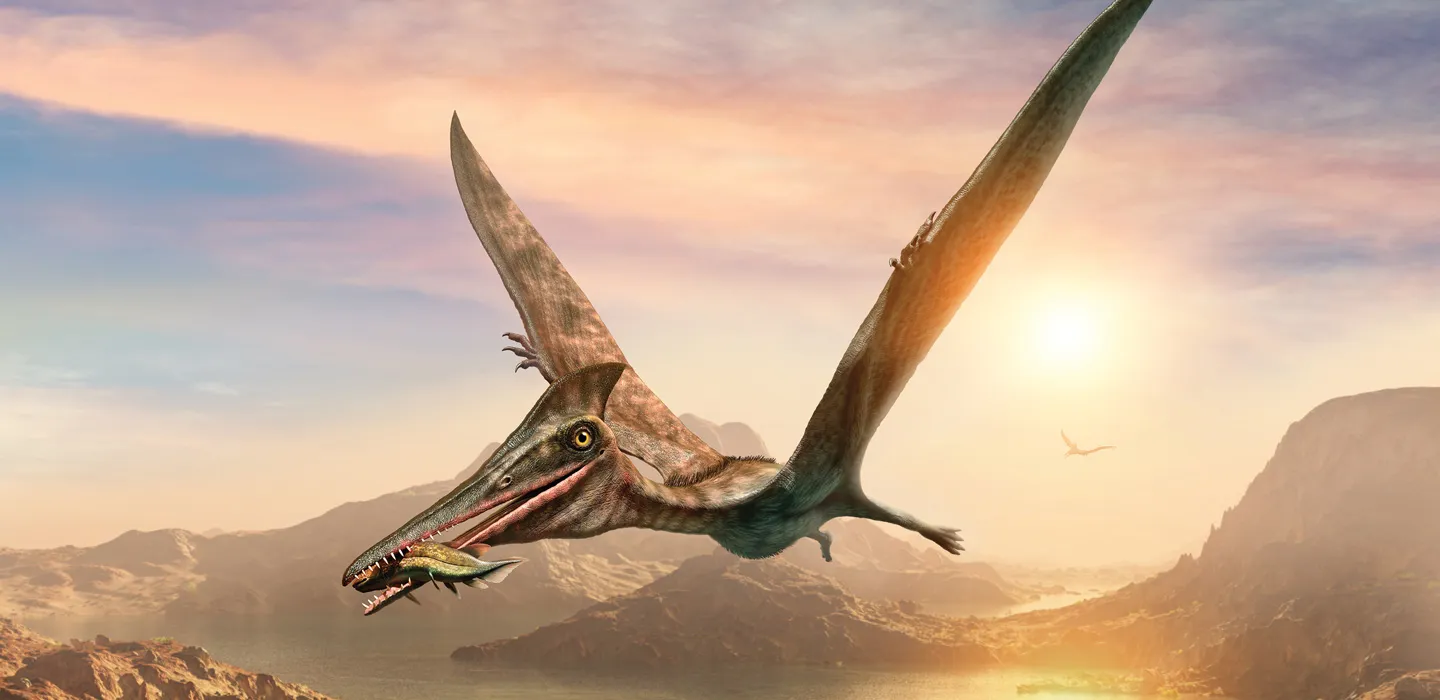By: Kingsley Wong
Several years ago, a museum curator named Kevin Petersen discovered pterosaur fossils in Queensland, a region of Australia. In honor of Mr. Petersen, the previously unidentified species has been given the scientific name Haliskia peterseni. “I’m thrilled that my discovery is a new species, as my passion lies in helping shape our modern knowledge of prehistoric species,” Mr. Petersen said. He saw a bone sticking out of the top layer of shale as he was checking on a fossil he had been preparing for removal. “I immediately identified it as a pterosaur, as the bone resembled a fractured hard-boiled egg, characteristic of flattened pterosaur bone,” claims Petersen.
The enormous flying reptile coexisted with dinosaurs had an enormous wingspan and a powerful, enormous tongue that it used to slurp up and gulp down its prey. The flying reptiles of prehistory, known as pterosaurs, had beaks resembling birds and wings. They lived around 225 and 65 million years ago. Pterosaurs were not dinosaurs, despite having a common ancestor and existing at the same time as them. The largest pterosaur, out of over 200 species, had a wingspan of 35 feet.
The fossilized bones of the recently discovered pterosaur were studied by a research team from Curtin University in Western Australia. They examined the arrangement of its teeth, as well as the form of its shoulder and skull bones. Using this information, the researchers were able to identify the species as an anhanguerian, a kind of pterosaur that is known to have existed in what are now Brazil, England, Morocco, China, Spain, and the United States, among other countries. They also discovered that this new specimen primarily ate fish, shellfish, insects, and eggs. PhD student Adele Pentland, who oversaw the research, said that Haliskia, with a wingspan of about 4.6 meters, “would have been a fearsome predator around 100 million years ago when much of central western Queensland was underwater, covered by a vast inland sea and globally positioned about where Victoria’s southern coastline is today.”
The Haliskia peterseni was a great discovery made by Kevin Petersen, that enabled scientists to learn more about pterosaurs and this new species. It is considered an apex predator where it was found and lived in a very unique environment. Whatever the cause of their demise, pterosaurs enjoyed uninterrupted success during their time on the planet. They flew a path into sun-drenched skies before any other vertebrate. For 150 million years they sailed the winds on the strength of their thin wings. Imagine the ride they had.











